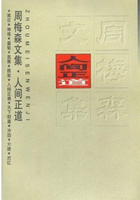It would appear that the current, reduced in strength by its passage through a long wire, had failed to excite his electro-magnet, and he was ignorant of the reason. Wheatstone by his knowledge of Ohm's law and the electro-magnet was probably able to enlighten him. It is clear that Cooke had made considerable progress with his inventions before he met Wheatstone; he possessed a needle telegraph like Wheatstone, an alarm, and a chronometric dial telegraph, which at all events are a proof that he himself was an inventor, and that he doubtless bore a part in the production of the Cooke and Wheatstone apparatus. Contrary to a statement of Wheatstone, it appears from a letter of Cooke dated March 4, 1837, that Wheatstone 'handsomely acknowledged the advantage' of Cooke's apparatus had it worked;' his (Wheatstone's) are ingenious, but not practicable.' But these conflicting accounts are reconciled by the fact that Cooke's electro-magnetic telegraph would not work, and Wheatstone told him so, because he knew the magnet was not strong enough when the current had to traverse a long circuit.
Wheatstone subsequently investigated the conditions necessary to obtain electro-magnetic effects at a long distance. Had he studied the paper of Professor Henry in SILLIMAN'S JOURNAL for January 1831, he would have learned that in a long circuit the electro-magnet had to be wound with a long and fine wire in order to be effective.
As the Cooke and Wheatstone apparatus became perfected, Cooke was busy with schemes for its introduction. Their joint patent is dated June 12, 1837, and before the end of the month Cooke was introduced to Mr. Robert Stephenson, and by his address and energy got leave to try the invention from Euston to Camden Town along the line of the London and Birmingham Railway. Cooke suspended some thirteen miles of copper, in a shed at the Euston terminus, and exhibited his needle and his chronometric telegraph in action to the directors one morning. But the official trial took place as we have already described in the life of Wheatstone.
The telegraph was soon adopted on the Great Western Railway, and also on the Blackwall Railway in 1841. Three years later it was tried on a Government line from London to Portsmouth. In 1845, the Electric Telegraph Company, the pioneer association of its kind, was started, and Mr. Cooke became a director. Wheatstone and he obtained a considerable sum for the use of their apparatus. In 1866, Her Majesty conferred the honour of knighthood on the co-inventors; and in 1871, Cooke was granted a Civil List pension of L100 a year. His latter years were spent in seclusion, and he died at Farnham on June 25th, 1879. Outside of telegraphic circles his name had become well-nigh forgotten.
IV. ALEXANDER BAIN.
Alexander Bain was born of humble parents in the little town of Thurso, at the extreme north of Scotland, in the year 1811. At the age of twelve he went to hear a penny lecture on science which, according to his own account, set him thinking and influenced his whole future.
Learning the art of clockmaking, he went to Edinburgh, and subsequently removed to London, where he obtained work in Clerkenwell, then famed for its clocks and watches. His first patent is dated January 11th, 1841, and is in the name of John Barwise, chronometer maker, and Alexander Bain, mechanist, Wigmore Street. It describes his electric clock in which there is an electro-magnetic pendulum, and the electric current is employed to keep it going instead of springs or weights. He improved on this idea in following patents, and also proposed to derive the motive electricity from an 'earth battery,' by burying plates of zinc and copper in the ground. Gauss and Steinheil had priority in this device which, owing to 'polarisation' of the plates and to drought, is not reliable. Long afterwards Mr. Jones of Chester succeeded in regulating timepieces from a standard astronomical clock by an improvement on the method of Bain. On December 21, 1841, Bain, in conjunction with Lieut.
Thomas Wright, R.N., of Percival Street, Clerkenwell, patented means of applying electricity to control railway engines by turning off the steam, marking time, giving signals, and printing intelligence at different places. He also proposed to utilise 'natural bodies of water'
for a return wire, but the earlier experimenters had done so, particularly Steinheil in 1838. The most important idea in the patent is, perhaps, his plan for inverting the needle telegraph of Ampere, Wheatstone and others, and instead of making the signals by the movements of a pivoted magnetic needle under the influence of an electrified coil, obtaining them by suspending a movable coil traversed by the current, between the poles of a fixed magnet, as in the later siphon recorder of Sir William Thomson. Bain also proposed to make the coil record the message by printing it in type; and he developed the idea in a subsequent patent.
Next year, on December 31st, 1844, he projected a mode of measuring the speed of ships by vanes revolving in the water and indicating their speed on deck by means of the current. In the same specification he described a way of sounding the sea by an electric circuit of wires, and of giving an alarm when the temperature of a ship's hold reached a certain degree. The last device is the well-known fire-alarm in which the mercury of a thermometer completes an electric circuit, when it rises to a particular point of the tube, and thus actuates an electric bell or other alarm.















